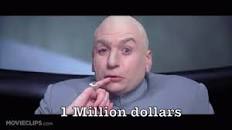My latest MoneySense Retired Money column, which has just been published, looks at an interesting study on trends in cashing out Retirement savings when American workers leave their jobs. You can find the full column by clicking on the highlighted text here: Should you cash out your workplace pension when you leave a job?
The paper, titled Cashing Out Retirement Savings at Job Separation, is co-written by a Canadian, Yanwen Wang, associate professor at the University of British Columbia’s Sauder School of Business. The study, which is fairly technical, is also featured in a more accessible version in the Harvard Business Review. The article that ran on March 7, 2023 is titled Too many employees cash out their 401(k)s when leaving a job.
Canada and the United States differ in how retirement plans are treated on leaving jobs, so most of the column applies mainly to the United States. But there may be lessons for the US retirement system that can be drawn from the Canadian treatment.
Average American has more than a dozen jobs over a career
In the US, the average American worker will have 12.4 jobs over a career, prompting the report’s authors to write that “Employers should recognize that most people working for them will change jobs before retirement.” Unfortunately, it’s all too easy for their workers to cash out of their 401(k)s when leaving a job, instead of rolling them over and letting the money continue to grow in a tax-deferred manner.
A UBC press release issued early in April carries the alarming headline that “Americans are cashing out the retirement savings at an alarming rate.” The study identifies a “key” problem: when they switch jobs, 41.4% of employees are cashing out of those funds — even though the U.S. Internal Revenue Service (IRS) imposes a 10% per cent penalty on anyone younger than 59.5 years old.
In particular, many Canadian RRSPs have a locked-in feature, Wang added: “which means that even at job changing cash withdrawals are not allowed unless the individual becomes non tax resident. The locked-in feature is a key feature not present in most US retirement savings accounts. I don’t have data but I believe the illiquidity feature substantially reduces 401(k) leakage. I think the U.S. can learn from the Canadian retirement system and consider something similar — a locked-in 401(k) on top of an emergency savings plan — to satisfy the long-term retirement needs as well as short-term liquidity emergency.”
Unlike Canada, American employees can cash out at any time whether they’re working or leaving a job: the only developed economy that does. As the article points out, “other countries require many months of unemployment and evidence of clear hardship before allowing someone to tap defined contribution retirement savings.”
Researchers also found an interesting phenomenon whereby the more a generous employer “matches” employee contributions, the more the departing employee is tempted to cash out and spend what it regards as “house money” or “free money.” Thus, the authors write, “Right now, cashing out is the path of least resistance. People choose what is easy, not what is wise.”
The column closes with some findings from a recent H&R Block Canada survey released on April 3, 2023. It found nearly half of Canadians are unprepared for retirement and more than a third (36%) between ages 18 and 54 believe they won’t ever retire.





